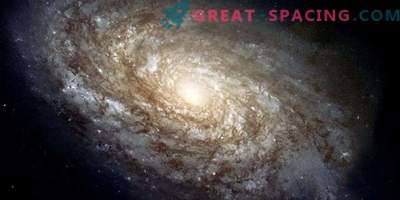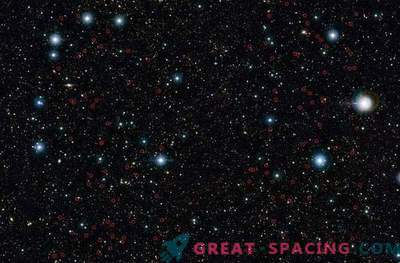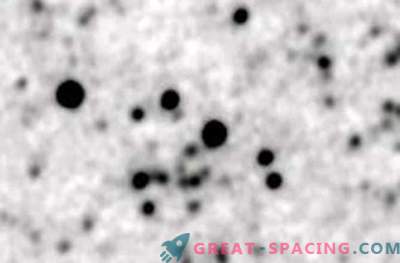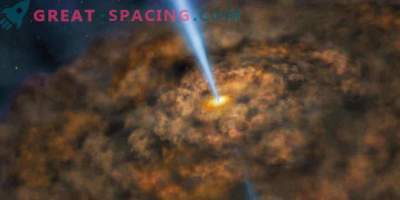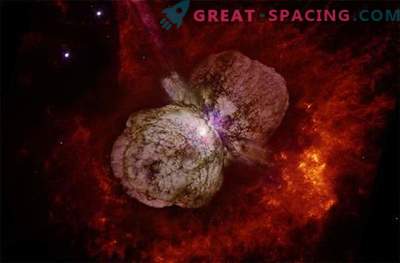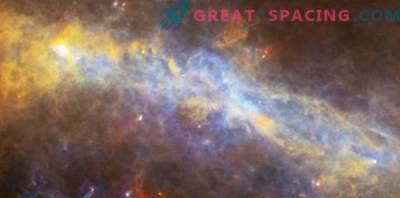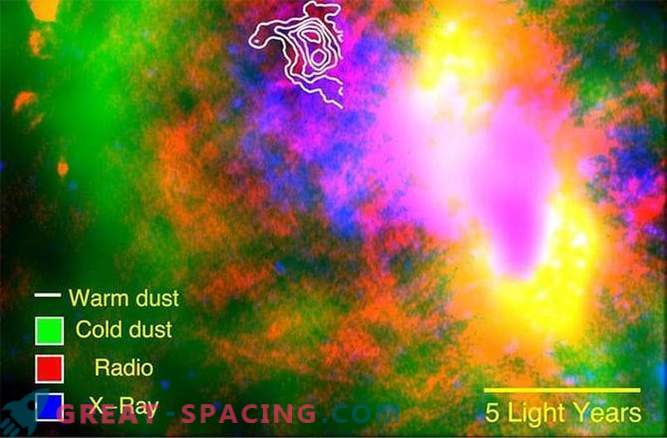
Looking at the center of the Milky Way galaxy in this pseudo-color photograph, you can see contour lines showing the dusty region in the east of the constellation Sagittarius. This is an ancient supernova remnant.
Thanks to the use of a powerful telescope fixed to the modified 747 JET series of Boing, astronomers discovered the dust of an ancient supernova near the center of the Milky Way.
This conclusion is unusual and unique because it was previously believed that the turbulent nature of the expanding supernova explosion should completely destroy this dust. However, its presence provides a clear understanding of why many galaxies seem dusty. This fact also reveals some extremely important details for the formation of a theory of the formation of stars and planets.
"The dust itself is extremely important because it is matter for the formation of stars and planets such as the Sun and the Earth. Accordingly, it is extremely important for us to know the origin of this dust," said lead author Ryan Lau, an employee of Cornell University of Astronomy in Ithaca, New York “Our work seriously strengthens the theory that supernovae produce dust that can be seen in the galaxies of the early Universe.” A long time ago, it was assumed that the main mechanism for the production of heavy elements in our Universe is supernovae. The explosions generate massive stars that die when they run out of fuel. These explosions are powerful enough to form dust rich in materials that become matter for the formation of future generations of stars and planets orbiting around them.
However, one of the main mysteries of the evolution of galaxies is why galaxies are so rich in dust if supernovae destroy most of the dust they create in the process of turbulence.
Using a telescope with an infrared camera at the SOFIA stratospheric infrared astronomy observatory, a joint project of NASA, the German Aerospace Center and the Association of Space Research Universities was implemented. As a result, scientists have obtained invaluable data on one particular supernova remnant near the center of our galaxy.
The SOFIA air observatory, capable of flying over the surface of the Earth at a height of 13.7 km (45,000 feet), is mounted on board a Boeing 747 and has a telescope of 2.5 meters in diameter. Because of this, SOFIA is the “golden mean” in infrared astronomy. With the help of ground-based telescopes you will not be able to observe long infrared waves. In addition, today there is no other space tool capable of covering the wavelengths that SOFIA works with. That is why, when region A in the east of the constellation Sagittarius fell into the observatory's survey area, scientists immediately discovered the supernova remnant in close proximity to the galactic center. Its age exceeds 10,000 years. It is noted that this residue is extremely saturated with dust, which is absolutely not typical of modern astronomical representations.
There is still no evidence that dust may be in the supernova remnants. That is why the findings are so important to us, said Lau. The results of the work of Lau and his team were published on March 19 in the publication “Science Express”.
